In Photos: Tomb Painting Discovered Near Great Pyramid of Giza
Tomb painting
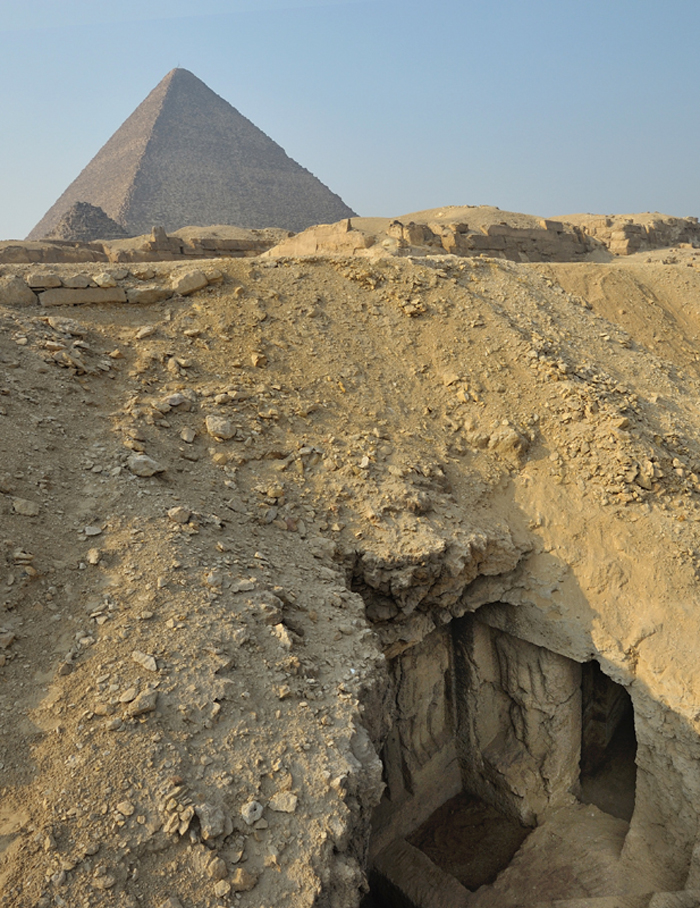
A new painting, depicting scenes of ancient Egyptian life, was discovered in 2012 in a tomb located about 1,000 feet (300 meters) east of the Great Pyramid at Giza. Pictured here the tomb is for a man named Perseneb whom inscriptions say was a "priest" and "steward." It dates to the middle or late fifth dynasty (ca. 2450-2350 B.C.). [Read full story]
Tomb statues
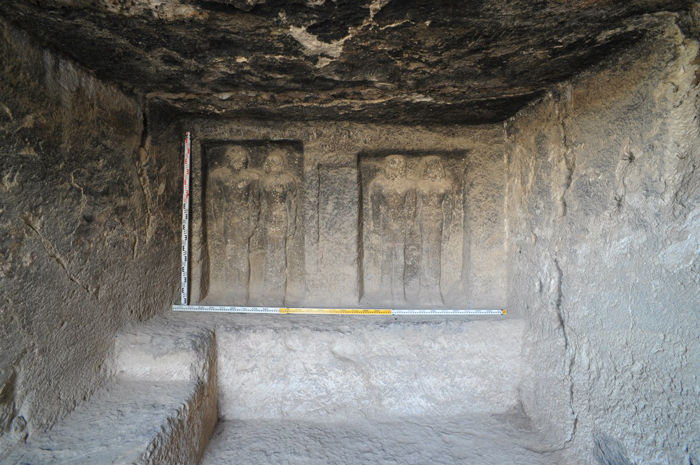
The tomb contains a central room, offering room and burial chamber. The complex was first recorded in the 19th century and was noted for its 11 statues, which include depictions of Perseneb and his family. Archaeologists were conducting restoration work and did not expect to make a new discovery. This image shows part of the central room with four of the statues. [Read full story]
Restoring a tomb painting
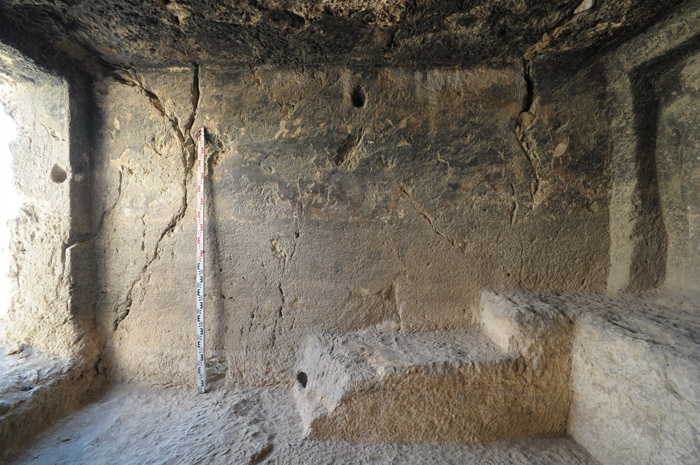
The remains of the painting were found here on the eastern wall of the central room of the tomb near the Great Pyramid at Giza. The painting required extensive cleaning and restoration in order to reveal what the images show.
Soot and dirt
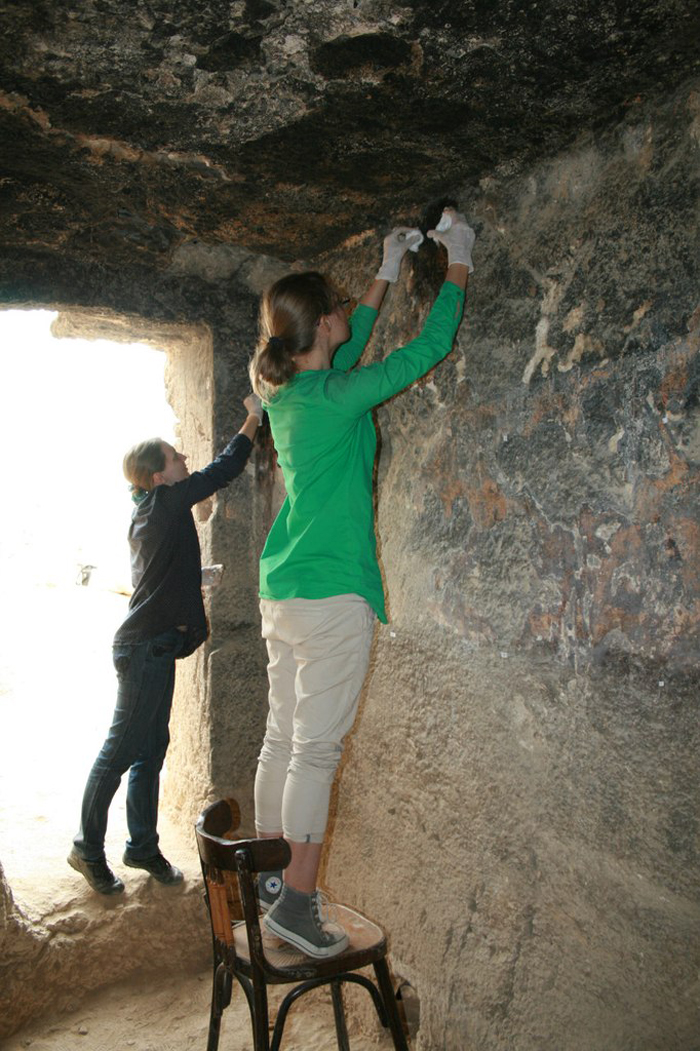
The archaeologists went to work, carefully cleaning the painting, removing soot and dirt. Since the 19th century the growth and industrialization of Cairo has led to pollution becoming a growing problem at Giza. Additionally people were actually living in this tomb at different time periods (including the Middle Ages) causing further damage to the painting. [Read full story]
Revealing scenes of life
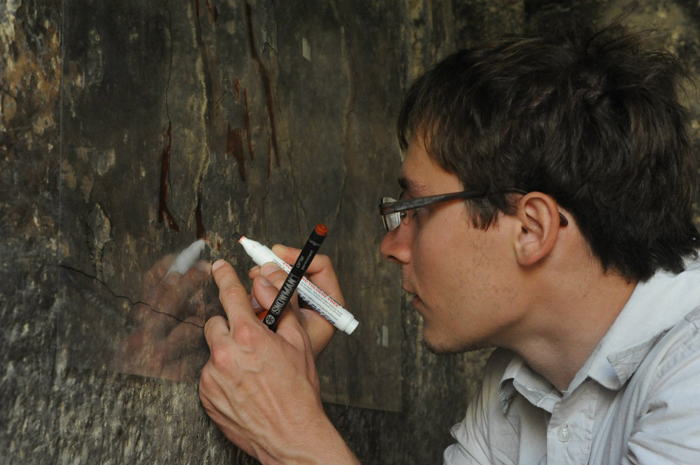
Archaeologists also traced the tomb painting, located near Egypt's Great Pyramid at Giza, allowing for the images to be reconstructed. The painting showed scenes of ancient life, such as boats sailing on the Nile River and a hunting trip for birds near a marsh.
Painting progress
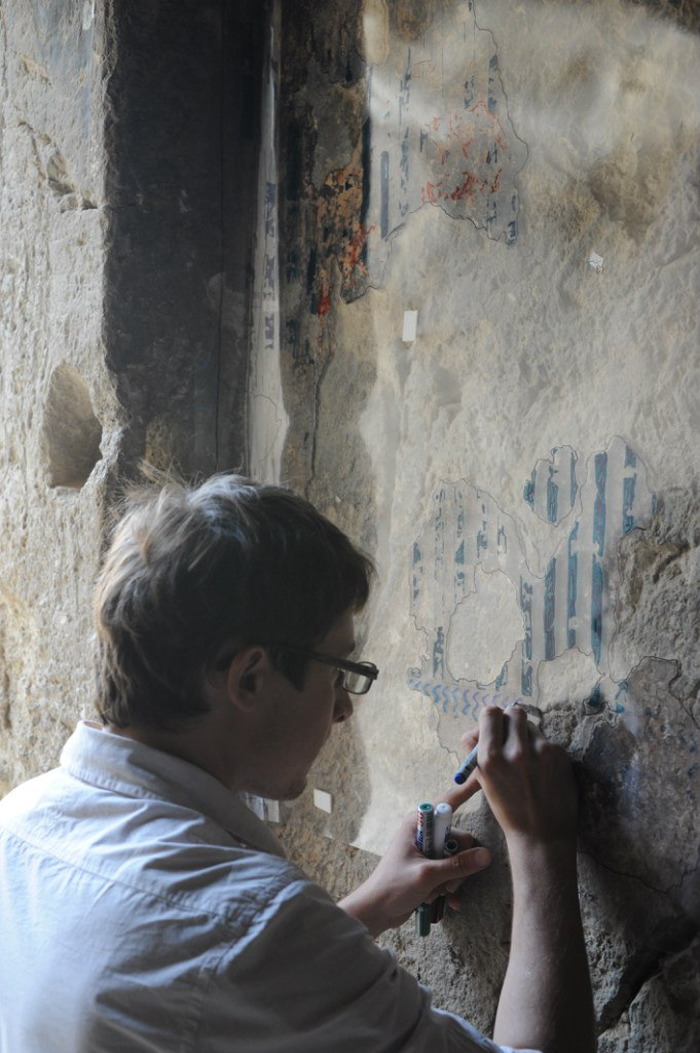
As work continued on cleaning and restoring the painting, discovered in the ancient tomb of a man, possibly a priest, near the Great Pyramid at Giza, the original artwork began to return to life.
Tomb painting comes to life
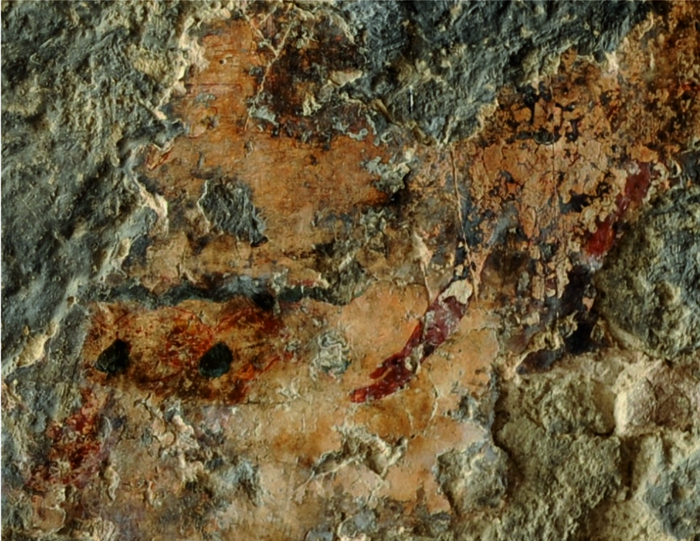
"The painting was made on a thin layer of fine white plaster darkened with 19th-century soot and dirt. By the time of recording, only about 30 percent of the original plaster had preserved on the wall," said Maksim Lebedev, a Reader (the American equivalent is a professor) at the Russian State University for the Humanities. Part of the painting after cleaning is shown here.
Sign up for the Live Science daily newsletter now
Get the world’s most fascinating discoveries delivered straight to your inbox.
Agricultural scene
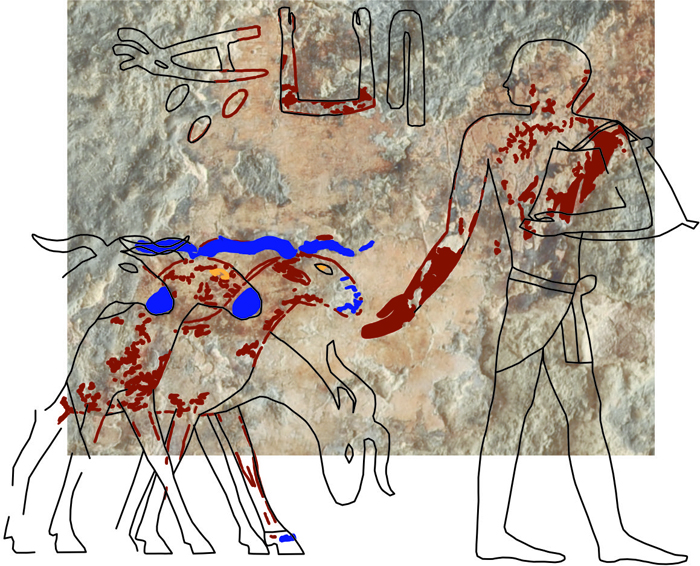
The same image from the ancient Egyptian tomb painting with the tracing superimposed. The painting, dating to the middle or late fifth dynasty (ca. 2450-2350 B.C.), has a lengthy agricultural scene that includes the driving of sheep.
Sailing the Nile
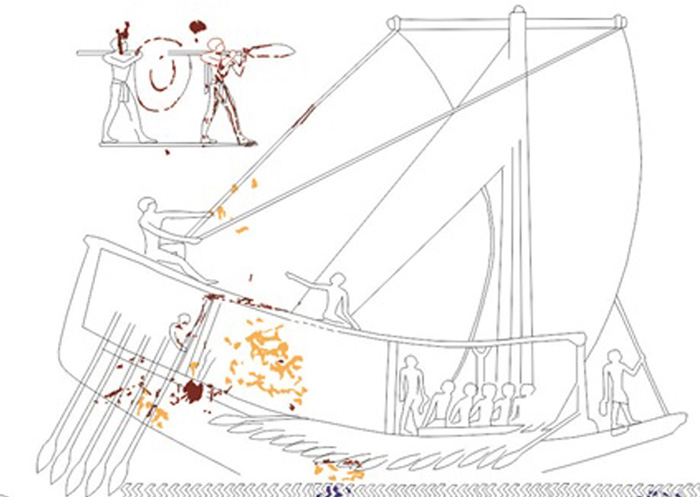
At the top of the tomb painting there is an image of boats sailing south along the Nile River. This image shows a reconstruction of one of them.
Perseneb and his dog
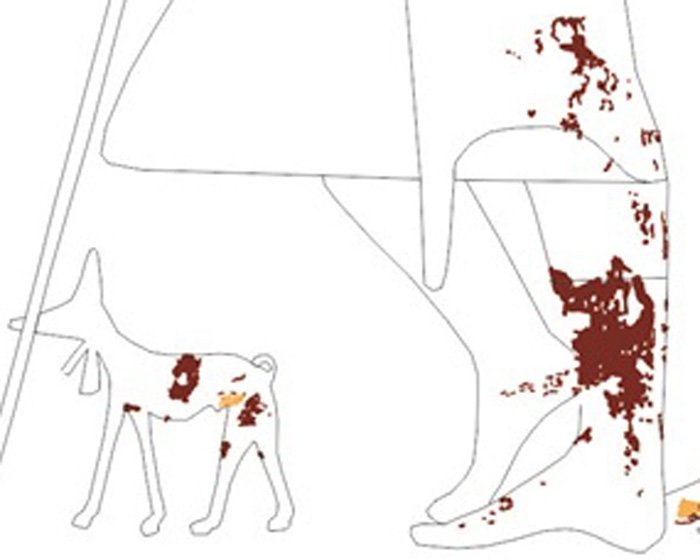
Part of the painting shows Perseneb, noted as a priest or steward in inscriptions, along with his wife and his dog. The dog is shown here at Perseneb's feet.
Reconstructed scenes
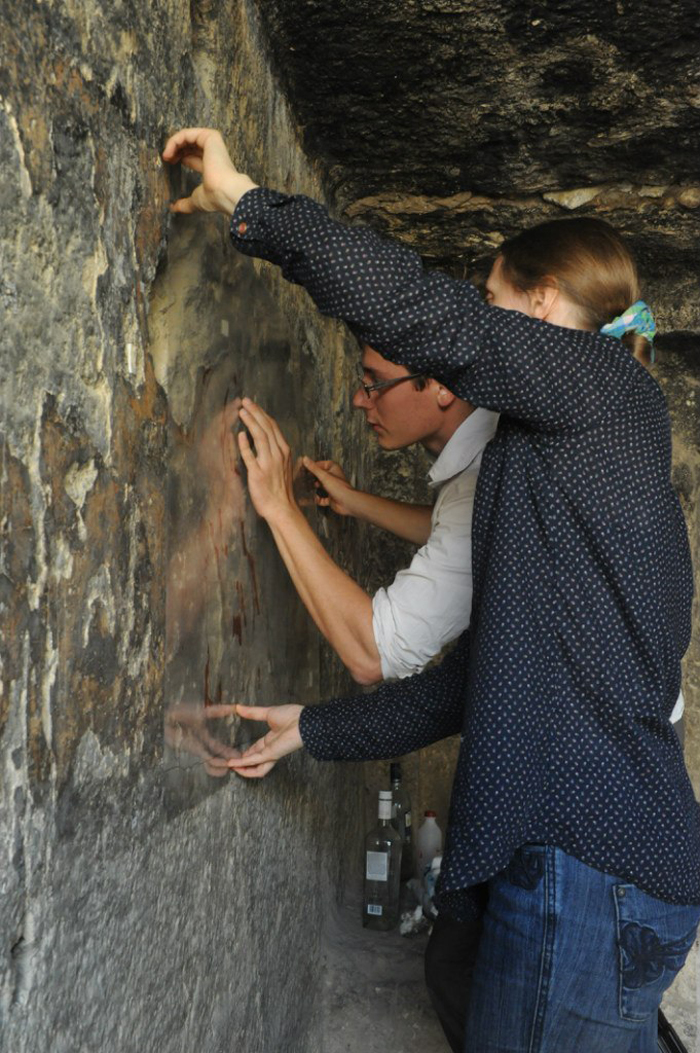
The reconstruction of the tomb painting found near the Great Pyramid at Giza will be published in full in a scholarly publication in the future. The images on Live Science show just a few of the reconstructed scenes.

Owen Jarus is a regular contributor to Live Science who writes about archaeology and humans' past. He has also written for The Independent (UK), The Canadian Press (CP) and The Associated Press (AP), among others. Owen has a bachelor of arts degree from the University of Toronto and a journalism degree from Ryerson University.









